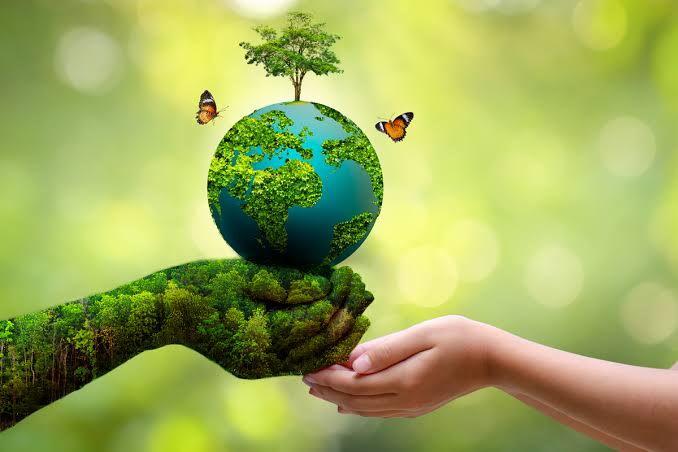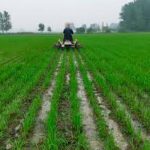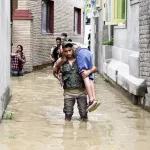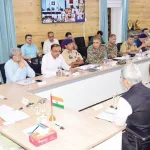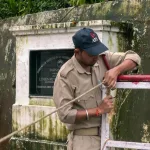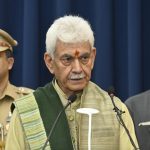India land of old souls and a young dream now finds itself standing on a delicate edge. As we march toward that $5 trillion economy milestone, the engines of progress are running fast. Highways cut through valleys, towers stretch into the sky, and industries creep into villages that once echoed only with birdsong.
The growth is tangible and so, too, is the price we’re paying. Let’s be honest: the push for development is vital. Millions are still fighting for basic livelihoods, and job creation is non-negotiable. But with all this growth, a tough truth stares us in the face our environment is gasping.
Cities now wear smog like a permanent veil, rivers that once held myths now carry waste, and forests fall to the sound of machines. It’s a beautiful story of progress unfolding in the shadow of a growing ecological emergency.
Consider the Mumbai Coastal Road Project. On paper, it promises smoother traffic and better connectivity. But in reality, it has disturbed fragile marine ecosystems and threatened the fishing communities who’ve lived there for generations. Or take the Char Dham Highway Project
a spiritual gateway, yes, but one that’s sparked massive deforestation in the already vulnerable Himalayan region, where landslides have now become frighteningly common.
Now, shift the lens to Jammu & Kashmir. Projects like the Zojila Tunnel and the four-lane Srinagar-Jammu highway have undeniably improved mobility. But it hasn’t come without a cost. Trees have been cut down by the thousands, mountains blasted open, and debris dumped into fragile ecosystems. In districts like Ramban and Anantnag, people are now reporting landslides where none occurred before, and agricultural lands are slowly slipping away.
Places like Gulmarg and Sonamarg, once poster-perfect images of paradise, are beginning to feel the weight of unsupervised tourism and rapid commercial development.
The biodiversity that once thrived there is now struggling to survive. And perhaps the most heartbreaking symbol of all Dal Lake in Srinagar. Once the shimmering jewel of Kashmir, it’s now fighting a slow battle against pollution, encroachment, and sheer neglect. Despite clean-up efforts, its shrinking size speaks louder than the promises.
But Kashmir, like the rest of India, still carries hope. Local heroes young people, students, farmers are quietly but passionately trying to turn the tide. Groups like Youth Convention Jammu & Kashmir and J&K ECO Watch are working tirelessly on lake restoration, promoting sustainable tourism, and educating people about climate change.
In the countryside, some farmers are choosing to return to organic roots, planting indigenous crops and using age-old water-saving methods. At the COP26 summit in Glasgow, Prime Minister Narendra Modi pledged to make the country net-zero in carbon emissions by 2070. Some might argue it’s too late, others that it’s not enough but for a country with our population and development needs, it’s a meaningful commitment.
There are bright spots. In Ladakh, we’re seeing a clean energy revolution, with solar farms spreading across the desert terrain. Sikkim has become a global model by going fully organic. And Indore a city once plagued with waste—is now leading the way with incredible success in cleanliness and public participation.
Movements like Save Aarey in Mumbai, and grassroots opposition to harmful mining in Goa, prove that when citizens come together, things can change. In Kerala, people have stood up to protect their sacred ecology, often facing political and industrial pressures head-on.
So, where do we go from here?
India doesn’t need to choose between development and the environment. We can, and must, pursue both. But it calls for wisdom in planning, strict policy enforcement, and—most importantly—community participation. Teaching environmental responsibility in schools, involving local voices in development plans, and making climate action personal is how real change begins.
This isn’t just about economic goals. It’s about clean rivers we can dip our feet into, forests where wildlife still roams freely, and air that doesn’t burn our lungs. It’s about protecting what we love while still building what we dream.
At this crossroads, India must pause not to stop but to ask: Are we growing with care? Are we listening to the land beneath our feet? The future is waiting, and so is the planet. Let’s make sure we don’t reach one at the cost of the other.
Author is a law student at Kashmir University & currently doing internship at Supreme Court of India)


